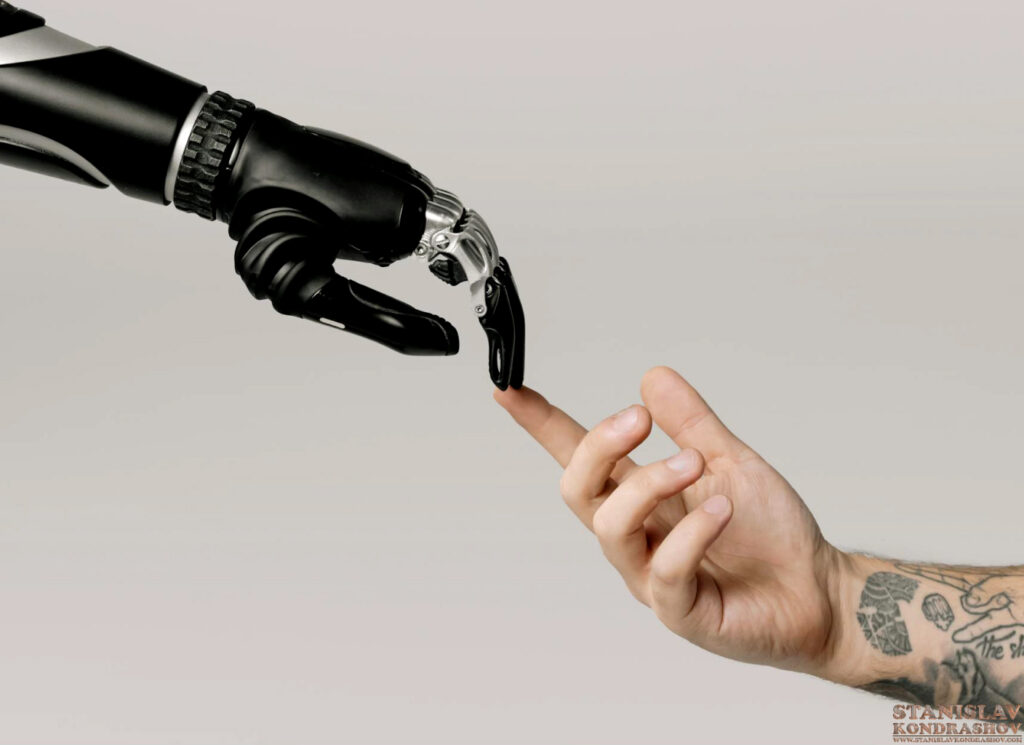Stanislav Kondrashov on How AI is Shaping Personalization in Customer Experiences
Shopping online or scrolling through streaming services, have you ever felt overwhelmed by the quantity of options? In our digital world, they are a blessing and a curse—so many options. Here comes AI personalization, a technology that changes the way we used to interact with products.
Stanislav Kondrashov, an expert in artificial intelligence, explores the role of AI personalization in our lives. AI is transforming how businesses personalize their services and meet the demands of their users, from tailored product recommendations to more customized user experiences. But how does this technology work, and what does it mean for consumers and industries?
Dive into this AI personalization discussion, exploring the nuts and bolts of this approach, its use cases across industries, and where it may encounter challenges. This will immerse us into the frontier of personalization experiences and how AI is changing our world.

Understanding AI Personalization
A. Definition and core concepts
AI personalization is the capability to incorporate and understand user involvement with AI algorithms to build custom-made products, services, and experiences. AI personalization exploits user data to devise highly personalized interactions and recommendations.
B. The role of data in AI personalization
Data is the lifeblood of AI personalization. It relies on:
- User behavior data
- Demographic information
- Contextual data
- Historical interactions
| Data Type | Examples | Importance |
|---|---|---|
| Behavioral | Browsing history, purchase patterns | High |
| Demographic | Age, gender, location | Medium |
| Contextual | Time of day, device used | Medium |
| Historical | Past purchases, ratings | High |
C. Benefits for businesses and consumers
AI personalization offers numerous advantages:
For businesses:
- Increased customer engagement
- Higher conversion rates
- Improved customer loyalty
For consumers:
- More relevant product recommendations
- Time-saving shopping experiences
- Tailored content delivery
D. Ethical considerations
While AI personalization provides significant benefits, it also raises ethical concerns:
- Data privacy and security
- Potential for bias in algorithms
- Transparency in data usage
- User consent and control over personal information
When transitioning the understanding of consumer behavior using artificial intelligence, these ethical thoughts must be balanced responsibly with the advantages of AI personalization. The content below will examine AI-based product customization and how organizations use these capabilities to offer creative user interactions.

AI-Driven Product Customization
Now that we understand AI personalization let’s review how it changes product customization. Business product customization allows for meeting each consumer’s unique needs, providing specific experiences and products that cater to them.
Tailoring Physical Products
AI is enabling manufacturers to create bespoke physical products at scale. For example:
- Footwear: Custom-fit shoes based on 3D scans of customers’ feet
- Clothing: Personalized garments adjusted to individual body measurements
- Nutrition: Tailored supplement blends based on genetic and lifestyle data
Personalized Digital Experiences
In the digital realm, AI is creating highly individualized user experiences:
| Digital Product | Personalization Example |
|---|---|
| Streaming Services | Customized content recommendations |
| News Apps | Tailored article selection |
| Fitness Apps | Personalized workout plans |
AI in E-commerce Recommendations
AI-powered recommendation engines are transforming online shopping:
- Analyzing browsing and purchase history
- Identifying patterns in user behavior
- Suggesting relevant products in real-time
Case Studies of Successful Implementations
- Netflix: Uses AI to personalize movie and TV show recommendations, resulting in increased viewer engagement
- Stitch Fix: Employs AI stylists to curate personalized clothing boxes for subscribers
- Spotify: Leverages AI to create custom playlists and suggest new music based on listening habits
As we move forward, we’ll explore how AI personalization is enhancing user experiences across various industries.

Enhancing User Experiences with AI
AI personalization is changing the way users experience digital platforms. Businesses use machine learning algorithms and enormous amounts of user data to provide tailored interactions that adhere to a given user’s tastes and characteristics.
Personalized Content Delivery
The content is powered by AI, which leverages user behavior, preferences, engagement patterns, and machine learning to deliver the most relevant content.
| Content Type | Personalization Factors |
|---|---|
| News Feed | Interests, reading history |
| Product Recommendations | Purchase history, browsing behavior |
| Video Suggestions | Viewing habits, likes, shares |
Adaptive User Interfaces
AI enables interfaces to adapt dynamically based on user interactions, creating a more intuitive and efficient experience. This can include:
- Rearranging menu items based on usage frequency
- Adjusting color schemes for optimal visibility
- Customizing layout for different devices or user preferences
Voice Assistants and Chatbots
AI-powered voice assistants and chatbots offer personalized interactions by:
- Learning from past conversations
- Adapting to individual speech patterns
- Providing context-aware responses
These technologies enhance user experiences by offering quick, personalized assistance around the clock.
Predictive Customer Service
AI analyzes customer data to anticipate needs and potential issues, allowing businesses to provide proactive support. This approach:
- Reduces response times
- Increases customer satisfaction
- Minimizes the likelihood of escalated issues
As we delve deeper into AI personalization, it’s crucial to examine its impact across various industries.

AI Personalization in Various Industries
Personalized AI is changing the landscape of several industries, making products and services customized per individual requirements. Here are some examples of how this technology is revolutionizing vital industries:
Healthcare: Personalized treatment plans
AI analyzes patient data to create customized treatment plans, improving outcomes and reducing side effects. For example:
- Genetic profiling for targeted therapies
- Personalized medication dosages
- AI-powered wearables for real-time health monitoring
Education: Adaptive learning systems
AI-driven platforms adjust to each student’s learning pace and style, enhancing educational experiences:
- Customized lesson plans and content delivery
- Real-time feedback and progress tracking
- Personalized homework assignments
Finance: Tailored financial advice
AI algorithms provide individualized financial guidance based on personal goals and risk tolerance:
- Automated portfolio management
- Personalized budgeting and savings recommendations
- Fraud detection tailored to individual spending patterns
Entertainment: Customized media recommendations
Streaming services use AI to suggest content based on viewing history and preferences:
| Platform | AI-Powered Feature |
|---|---|
| Netflix | Personalized thumbnails |
| Spotify | Discover Weekly playlists |
| YouTube | Tailored video recommendations |
Travel: Personalized itineraries and experiences
AI-powered travel apps create custom trip plans based on individual preferences:
- Personalized destination suggestions
- Customized activity recommendations
- Real-time travel updates and adjustments
As we’ve seen, AI personalization is transforming various industries, enhancing user experiences and outcomes. However, this technology also presents certain challenges and limitations, which we’ll explore in the next section.

Challenges and Limitations of AI Personalization
Data privacy concerns
As AI personalization proliferates, Data privacy becomes critical. The increase in data breaches and growing concerns about personal privacy have made users wary of how their personal information is collected, stored, and utilized. Companies striving to provide personalized experiences must deal with strict regulations such as GDPR and CCPA.
Algorithmic bias and fairness
AI systems can be inherently biased, inadvertently propagating or magnifying existing prejudices and mistreating certain users. This challenge necessitates continuous monitoring and adjustment of AI models to ensure similar and just results for everyone.
Balancing personalization with user autonomy
Personalization can improve user experiences but may restrict exposure to different viewpoints and create “filter bubbles.” Finding the sweet spot between personalized offerings and retaining terra firma for user agency is vital for the ethical use of AI.
Technical limitations and data quality issues
AI personalization is only as powerful as the data it is built upon. Only complete or accurate data can cause recommendation errors or annoying symptoms of user frustration. Moreover, implementing real-time personalization at scale poses serious technical challenges.
| Challenge | Impact | Potential Solution |
|---|---|---|
| Data Privacy | User trust erosion | Transparent data policies |
| Algorithmic Bias | Unfair treatment | Regular audits and diverse training data |
| User Autonomy | Limited perspectives | Offer customization options |
| Data Quality | Poor recommendations | Implement robust data validation |
As we move forward, addressing these challenges will be crucial for the responsible and effective implementation of AI personalization technologies.

Future Trends in AI Personalization
With the ongoing evolution of AI personalization, many exciting trends are emerging that will define the future of personalized experiences and products. Let’s dive deeper into these new advancements and how they could reshape industry sectors.
Advanced Natural Language Processing
Natural language processing (NLP) will be addressed increasingly sophisticatedly, allowing AI systems to understand and respond to human communication with unprecedented accuracy. This progress will result in:
- More natural and context-aware conversational AI
- Improved sentiment analysis for better customer service
- Enhanced language translation capabilities
Emotion Recognition and Empathetic AI
With advances in this technology, AI systems are improving at recognizing and responding to human emotions, making way for more empathetic interactions. This trend will result in:
- Personalized content recommendations based on emotional states
- Adaptive user interfaces that adjust to users’ moods
- More effective virtual assistants and chatbots
Integration with Internet of Things (IoT) Devices
These IOT devices can be used with AI personalization to convert our homes into intelligent places. This integration will enable:
| IoT Device | AI Personalization Benefit |
|---|---|
| Smart Home | Automated climate and lighting adjustments based on individual preferences |
| Wearables | Personalized health recommendations and fitness tracking |
| Vehicles | Customized driving experiences and route suggestions |
Augmented and Virtual Reality Experiences
AI personalization will play a crucial role in shaping immersive AR and VR experiences, offering:
- Tailored virtual environments for education and training
- Personalized virtual shopping experiences
- Customized entertainment and gaming scenarios
But as these trends evolve, AI personalization will likely become increasingly embedded in our everyday lives, making experiences across different domains more intuitive, responsive, and customized.

The advent of AI personalization is redefining the business model of how companies interact with consumers with personalized products and experiences according to individual needs. Whether customized product recommendations, user interfaces in general, or other user interfaces, user experience is the game’s name, along with AI-driven solutions across markets. The potential for AI personalization to make our interactions more meaningful and efficient is immense despite concerns about data privacy and algorithmic bias.
Here’s how it could have been rewritten. AI personalization is here to stay and will only become more specific and integrated into our daily lives in the best and worst ways. As long as businesses harness these innovations thoughtfully and ethically, organizations can get closer to their consumers than ever before, and consumers can benefit from more targeted (and satisfying) experiences in their new normal.
By Stanislav Kondrashov



